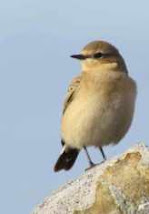Scottish Natural Heritage (SNH) is warning motorists that collisions between deer and vehicles soar at this time of year, with the risk of a collision almost twice as high in Scotland as in England.
As the nights get longer and the clocks turn back, red deer are moving down from the hills at the same time as commuters head home.
From 18 October to 1 November, electronic variable messaging signs will warn motorists at key locations on the main trunk roads in Scotland, such as the A9, A835, A85, A82, and A87.
It is estimated that there are more than 10,000 deer-related motor vehicle accidents every year in Scotland, on average causing about 70 serious human injuries. The economic value of these accidents is £5 million. Across the UK, it’s estimated there are between 42,000 and 74,000 deer-related motor vehicle accidents a year, resulting in 400 to 700 human injuries and about 20 deaths, with a cost of over £17m.
Many people think most accidents with deer occur on remote Highland roads, but actually 70 percent occur on trunk roads or motorways. As well, when traffic volume is taken into consideration, the risk of a collision with a deer is about twice as high per vehicle-mile driven in Scotland compared to England, according to the Deer Vehicle Collisions Project.
Jamie Hammond, SNH deer management officer, said:
“The risk of accidents is particularly high at this time of year. With shorter days and the clock change, the time when deer are feeding on road verges at night overlaps with peak commuting times. I’d strongly urge motorists to slow down and keep a careful watch for deer crossing roads.
“If you slow down or stop for one deer, be aware that more deer may follow the first – so keep your speed down and be alert. Turn off your fullbeams, as deer may be startled and freeze instead of leaving the road.
“If you do hit a deer, report it to the police, as the deer may be fatally injured and suffering.”
Other tips include:
· After dark, use full-beams when there is no oncoming traffic, as this will illuminate the eyes of deer on or near a roadway and give you more time to react. But dim your headlights when you see a deer or other animal on the road so you don’t startle it.
· Try not to suddenly swerve to avoid hitting a deer. A collision into oncoming traffic could be even worse.
· Only break sharply and stop if there is no danger of being hit by following traffic. Try to come to a stop as far away from the animals as possible to allow them to leave the roadside without panic, and use your hazard warning lights.
· Report any deer-vehicle collisions to the police, who will contact the local person who can best help with an injured deer at the roadside. Do not approach an injured deer yourself – it may be dangerous.
Wednesday 20 October 2010
Subscribe to:
Post Comments (Atom)












No comments:
Post a Comment